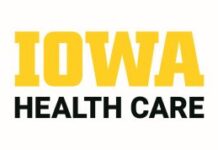Downtown, Riverfront Crossings, UI poised for growth
By Pat Shaver
IOWA CITY—Last year was one of slow but steady growth for Iowa City.
With a recovering economy and growing population, the city has had to become more efficient with financial management, but has also had the opportunity for growth, Iowa City Mayor Matt Hayek said at his state of the city address at last week’s city council meeting.
“The last year in Iowa City saw a renewed emphasis on economic development and neighborhood stabilization. The city council embraces the strategic priorities of increasing our tax base and creating new high-quality jobs,” he said.
Mr. Hayek sees the greatest growth and development potential in downtown, the Riverfront Crossings District and the University of Iowa campus.
“Our studies show that significant benefits could emerge from these areas in terms of creating an exciting urban environment that appeals to a broad group of citizens,” he said, adding that other areas of focus for development include: Towncrest on the east side and the Highway 1/Highway 6 commercial corridor.
“The College and Gilbert site, presently the subject of considerable discussion, will transform a deteriorating building and parking lot into a valuable downtown asset,” he said.
The 20-story building will include a movie theater, restaurant, bowling alley, residential space and offices. The city went through several public input sessions before selecting a developer for the project.
“The level of interest in this redevelopment infrastructure opportunity is an indication that our downtown is attractive and growing,” he said. “At the same time, we see strong indications of growth all over town, including the Moss Ridge project near Interstate 80, various developments near Interstate 380 and residential building throughout.”
Mr. Hayek noted there is potential in tax increment financing funds to help with the city’s economic development. The city has used only about 12 percent of its total potential TIF funding.
Another potential for economic growth, he said, is the Amtrak passenger rail from Chicago to Iowa City, continuing west.
“A comparable city in Illinois recently reported more than $200 million in private sector investment around its passenger rail station, and we believe a station in the heart of Riverfront Crossings would have a similar impact,” Mr. Hayek said.
City officials continue to push state lawmakers to support the passenger rail service.
Other decisions at the state level will have impacts locally, he said.
“Commercial property tax reform, should it pass in Des Moines, could have a major impact on city budgets,” he said. “And pension requirements, coupled with an aging workforce and ever-escalating health insurance costs, put tremendous pressure on local budgets.”
Over the last two years the city has lowered property taxes by 5.8 percent, reduced city staff by 22 positions and aggressively sought out millions of dollars in state and federal grants.
The city has also continued to recover from the 2008 flood.
“Currently planned are 16 major flood mitigation projects, totaling $158 million. Thus far, we have assembled over $100 million in committed state and federal grants as well as $32 million in local options sales tax toward the cost of these projects,” Mr. Hayek said.
The relocation of the North Wastewater Treatment Plant, at $55 million, will be the most expensive public works project in the city’s history. Other projects include: elevation of Dubuque Street and the Park Road Bridge; West Side Levee and Rocky Shore Drive floodgate and lift station; and a new animal shelter. The city’s flood buyout program demolished about 95 flood-prone homes in 2012 and will replace them with about 130 new homes through the state’s Single-Family New Homes program.
“While the floods were certainly devastating for those affected, the opportunity to rebuild parts of Iowa City and the university is unprecedented,” he said. “We hope to make the most of this disaster, both for flood protection and for community and for economic development.”




